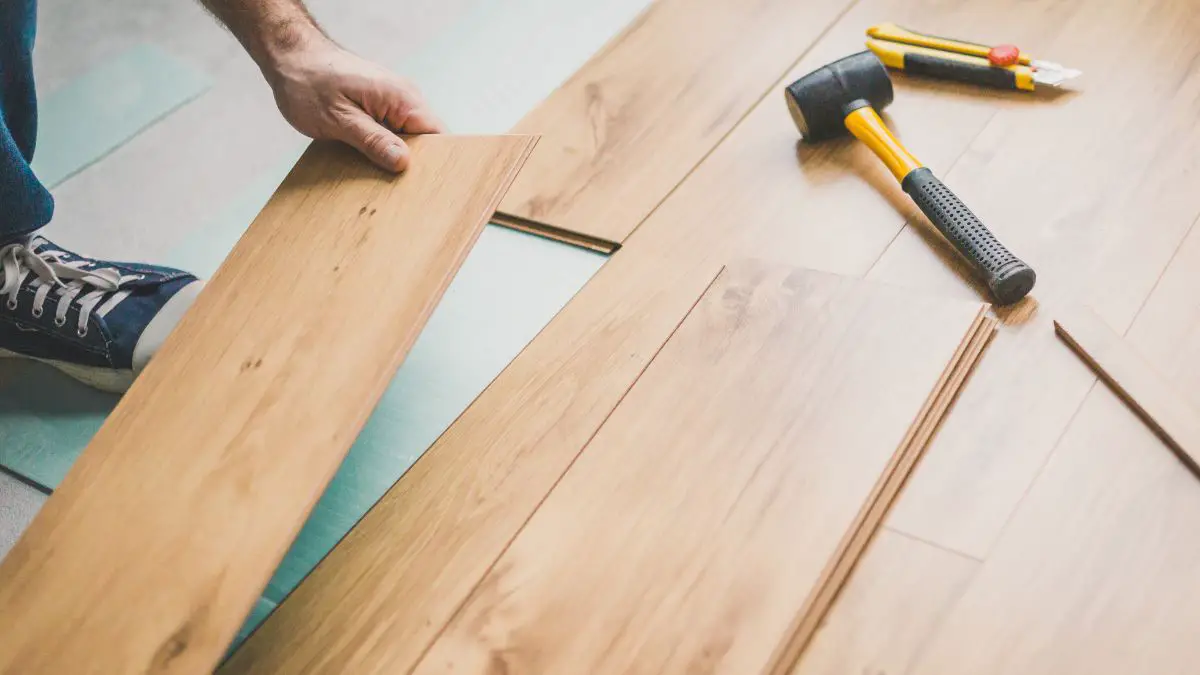Are you in the process of installing hardwood flooring in your home and wondering which method is the best for securing the flooring to the subfloor – cleats or staples?
It’s a tough decision, as both methods have pros and cons. This blog post will take a closer look at cleats and staples to help you decide. Whether you’re a seasoned DIYer or a beginner, we hope this information will be helpful for you. So, let’s dive in!
The Main Difference Between Cleats and Staples
The main difference between cleats and staples for nailing hardwood floors is the shape of the nail and the way it secures the flooring to the subfloor. Now that we know the main difference, let’s dive into a little more detail on each option.
What Are Cleats?
So, what exactly are cleats? Cleats are thin, L-shaped nails used to secure the hardwood flooring to the subfloor.
They are typically more expensive than staples but are also more durable and hold the flooring more securely.
One of the biggest advantages of cleats is that they are less prone to popping or loosening over time. This means your flooring will stay in place and look great for years.
Another benefit of cleats is that they are easier to remove when it’s time to replace the flooring.
If you’re planning on keeping your hardwood flooring for a long time, this is definitely something to consider. No one wants to spend hours prying loose staples from their floor!
What Are Staples?
On the other hand, staples are thin, flat nails used to secure the hardwood flooring to the subfloor.
They are generally less expensive than cleats but also less durable and may loosen or pop over time. This can be a real problem if you live in a high-traffic area, as the constant pounding of feet can cause the staples to loosen and the flooring to become unstable.
One of the biggest drawbacks of staples is that they are more difficult to remove when it’s time to replace the flooring. In addition, staples tend to bend and deform when pulled out, which can be frustrating and time-consuming.
If you’re planning on replacing your hardwood flooring in the near future, consider using cleats instead of staples to make the job easier.
Which One Is Best for You?
That ultimately depends on your needs and budget! Cleats may be the best choice if you’re willing to spend a little extra for added durability and security. If cost is a primary concern, staples may be a more viable option.
Frequently Asked Questions
Can I mix and match cleats and staples when installing my hardwood flooring?
It is generally not recommended to mix and match cleats and staples, as this can lead to unevenness and instability in the flooring. Instead, it is best to choose one method and stick with it throughout the installation process.
Is it easier to install hardwood flooring using cleats or staples?
Both methods require a certain level of skill and experience to install correctly. Some people may find cleats easier to work with, while others may prefer staples. It really comes down to personal preference.
Can I install hardwood flooring over an existing floor using cleats or staples?
It is generally not recommended to install hardwood flooring over an existing floor, as this can lead to unevenness and other issues. Instead, removing the existing flooring is usually best before installing the hardwood. This ensures that the subfloor is level and free of debris or imperfections, which will help ensure a smooth and stable installation.
Final Thoughts
So, which method is the best choice for installing hardwood flooring? In general, cleats are the better option. This is because they are more durable and hold the flooring more securely, which means that it will stay in place and look great for many years.
However, staples may be a more cost-effective option for some installations, especially if the flooring is expected to last for a short time.
So there you have it – a quick comparison of flooring cleats versus staples for installing hardwood flooring. Of course, both methods have pros and cons, so it’s essential to consider which option is best for your specific needs and budget.
If you’re still unsure which method to use, it may be helpful to consult with a professional flooring installer or do some additional research on your own.


